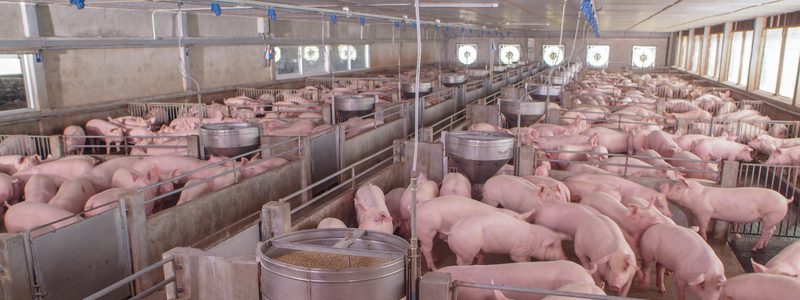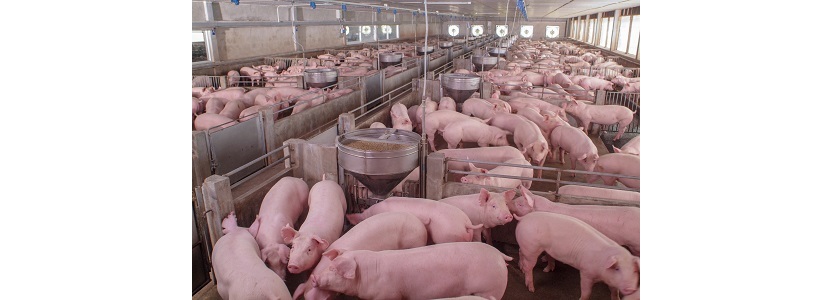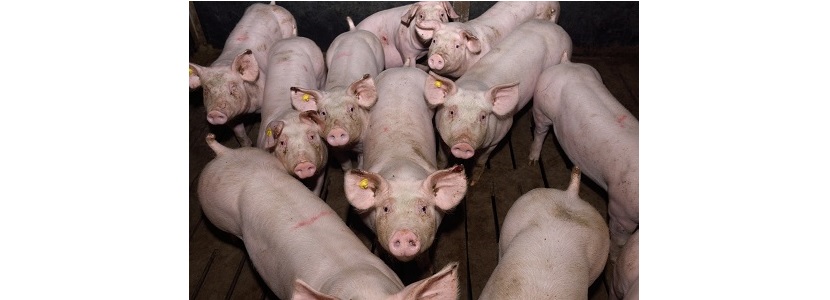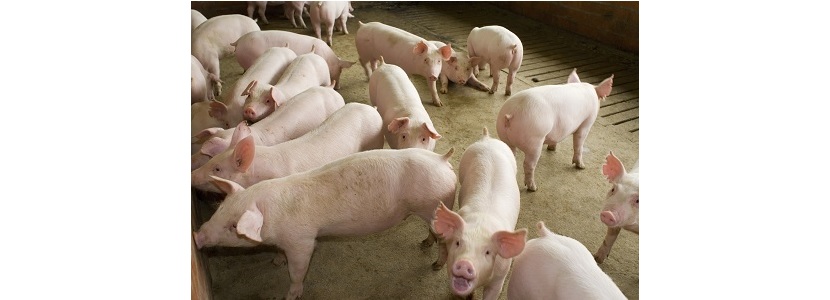 13 Sep 2022
13 Sep 2022
Protein levels are an important factor that must be considered when formulating pig diets. In pig production, crude protein (CP) content in the diet can be reduced when the requirements for amino acids (AA) and total nitrogen are met.
A 2% to 4% reduction of CP in reference to NRC (1998) recommendations, along with the supplementation of synthetic amino acids, have shown to increase nitrogen utilization, reduce feed costs and nitrogen excretion. Promoting gut health without hindering growth yields in pigs.
One of the most worrying variables when pigs are fed low-protein diets is the risk of obtaining a fattier carcass. This may be due in part to greater energy availability within the diet for fat deposition. The use of the net energy system (NE) when formulating low-protein diets for pigs has been suggested by several authors in recent years as a means to still achieve acceptable yields, carcass characteristics and meat quality.
Reduced feed costs
Soybean meal is the most widely used protein source in pig diets, with consistent high quality. Like other protein ingredients such as cottonseed flour, rapeseed meal, and dry distillery grains with solubles (DDGS), soybean meal is more expensive than energy sources. Therefore, considering lower protein inclusion levels and greater inclusion of energy sources can reduce feed costs by approximately 1.5%.
On the other hand, reduced nitrogen excretion, results in a lower incidence of respiratory diseases as well as greater durability within the facilities. Without disregarding the fact that it contributes to mitigate environmental impacts by reducing pollutiuon levels.

Nitrogen emission
Nitrogen excretion is the center of criticism towards modern production systems, This is due to the negative environmental impacts caused by ammonia (NH3) found in pig manure, leading to the acidification and eutrophication of sensitive ecosystems as well as odor emissions.
Based on an assumed ideal protein pattern, low-protein diets improved nitrogen utilization efficiency without affecting nitrogen digestibility and retention. Most studies indicated that a dietary reduction of CP by more than 20gr/kg could effectively reduce nitrogen emissions.
Effects of dietary CP
Each reduction of 10gr/kg of BW in the diet can decrease ammonia emissions in feces and urine by 8% to 10%. In addition, a lower dietary CP level resulted in lower water intake, along with decreased urine excretion.
Odor emissions from pig production units can be a nuisance in surrounding areas. Sulfur-containing AA fermentation products, including H2S, dimethyl sulfide, dimethyl disulfide, and dimethyl trisulfide have been correlated with odor concentration. Odor production is often a consequence of the anaerobic fermentation of undigested proteins in animal manure.

Lysine y arginine
In general, a lysine deficiency will not directly affect the host’s immune response, but will limit protein synthesis (including cytokines) and lymphocyte proliferation. In addition, due to the fact that lysine shares the same transport systems with arginine, available dietary lysine can also modulate arginine metabolism.
Arginine is an essential amino acid in piglets due to its insufficient endogenous synthesis. Therefore, it has been reported that arginine supplementation could improve weaned piglets’ immune response.
Inclusion of fermentable carbohydrates in low-protein diets
Recently, a moderate inclusion of fermentable carbohydrates appears to be the most promising approach to maximizing the effectiveness of low-protein diets. The reasons that support this approach are:
1) Nitrogen excretion is diverted from urine to feces;
2) It increases the production of short-chain fatty acids while reducing the pH of slurry;
3) Carbohydrates are preferred substrates for microbial fermentation.
Along with reductions in nitrogen excretion, and NH3 emissions, the incidence of diarrhea and odor production are also mitigated. All of these factors are beneficial for both piglet growth and for the environment.

Carcass features
Increased dorsal fat thickness and a muscle area reduction for the longissimus dorsi have been documented at slaughter for fattening pigs that were fed low-protein diets.
Three reasons that can explain this are:
1) Greater energy requirements for the excretion of excess AA in high-protein diets. Conversely, low-protein diets are closer to having the ideal protein proportion to allow a reduction in energy requirements for N excretion. This in turn allows more energy to be deposited in adipose tissue;
2) The relative weight of the liver, intestine, kidneys and pancreas is higher for diets with high CP concentrations. This generates increased energy requirements for maintenance.
3) A relatively higher proportion of cereals in low-CP diets results in higher available starch content which is more efficient for fat deposition compared to AA.
4) Energy imbalance in regards to nitrogen
Supplementation of functional AAs has shown potential to reduce excessive body fat (e.g., leucine, arginine, glutamine, glutamate, and proline).
Some studies have shown that dietary arginine, a semi-essential AA, can reduce fat deposition and stimulate protein synthesis by regulating the metabolism of energy substrates through NO production.
The NE system (compared to digestible (DE) or metabolizable (ME)) energy) has been confirmed as superior in controlling carcass adiposity and will be describe with greater detail in subsequent publications.
Conclusions
Low-protein diets have the advantage of reducing feed costs and nitrogen excretion. As well as decreasing the incidence of diarrhea in piglets at weaning. However, pig yields must not be compromised when feeding these diets.
The reduction of CP levels by 3 or 4%, together with the supplementation of lysine, threonine, tryptophan, methionine and valine does not produce negative effects on animal performance or nitrogen retention.
The challenge of obtaining less lean carcasses due to low-protein diets can be solved through the use of a balanced NE and AA system.
Subscribe now to the technical magazine of animal nutrition
AUTHORS

Hybrid Rye Potential in Laying Hen Feed Rations
Gwendolyn Jones
A day in the life of phosphorus in pigs: Part I
Rafael Duran Giménez-Rico
Use of enzymes in diets for ruminants
Braulio de la Calle Campos
Minerals and Hoof Health in the Pregnant Sow
Juan Gabriel Espino
Impact of Oxidized Fats on Swine Reproduction and Offspring
Maria Alejandra Perez Alvarado